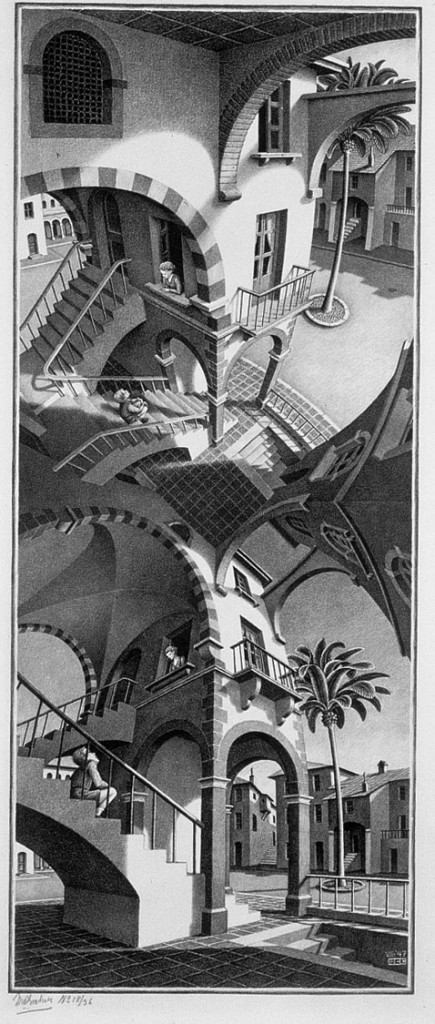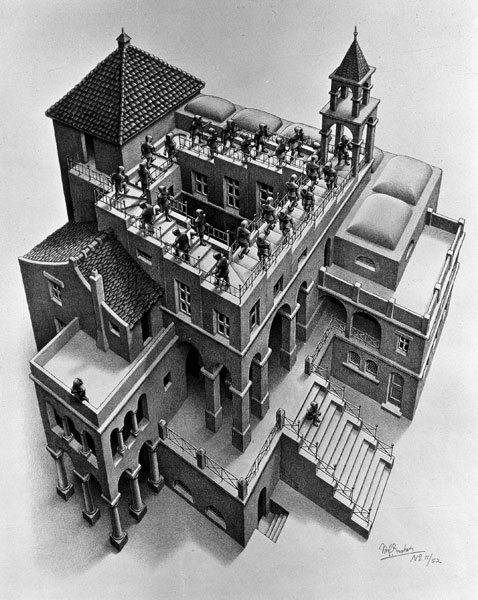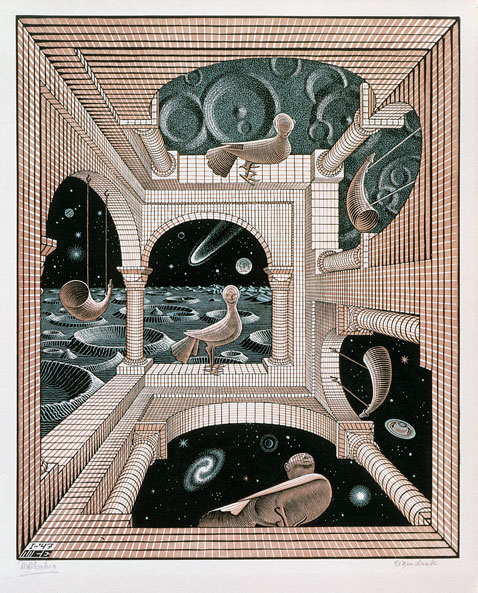“As from 1950, Escher dedicated himself to manipulating space and perspective, experimenting with gravity and the construction of impossible spaces and architectures. The ambiguity of these scenarios in which different worlds converge simultaneously and cyclically, constitute a subjective framework of highly thought-provoking work, the product of the artist’s imagination.
Escher’s attraction towards strange and impossible spaces, with vanishing points that are distorted and only apprehensible in the imagination, is likely to have stemmed from his initial architecture studies and particularly the engravings by Piranesi, the vedute, with which he became acquainted on his travels to Rome in his youth. On setting eyes on lithographs such as Relativity (1953) or Convex and Concave (1955), it is impossible not to bring to mind the Carcieri (prisons) of the Venetian artist, from which Escher would learn the continuous and infinite spatial relationship and the cyclical perspective with no beginning or end. These spatial fantasies are conceptual constructs, which uphold the Einsteinian discourse on the relationship between space and time.”
from www.eschergranada.com
I’m coming into a haul of Usborne Puzzle Books very soon and I thought that doing some preliminary research into Escher might very well help me construct my own visual puzzles, because I’ve never done that before and it’s an intrinsic part of the puzzle book genre.
 Up And Down (1947)
Up And Down (1947)
 Ascending And Descending (1960)
Ascending And Descending (1960)
 Other World (1947)
Other World (1947)
Visual puzzles are also integral to The Merlin Mystery, a book that inspired my Dictionary project almost as much as House Of Leaves did. I never got to use the visual puzzle aspect of the former, but after I get through the pile of Usborne books that I’m going to get my hands on soon it’s likely that I’ll want to experiment with my own strange Escher-esque puzzle universes that build on the virtual reality/Gemini storylines that I already have.
As of now, FYP progress looks like this:
- I like world-building and user interaction but I still want to play old-school and have illustrated puzzles/books instead of digital UIs – for the most part, I like keeping things analog with references like Fighting Fantasy and Usborne puzzle books
- Castor/Pollux storyline is dormant; I might want to include or turn the storyline to be more about Janus (the Roman god of beginnings and doorways, appropriate for armchair adventure stories)
- I am still very into bizarre and disturbing things (the dark side of virtual reality, body horror, macabre illustrations)


